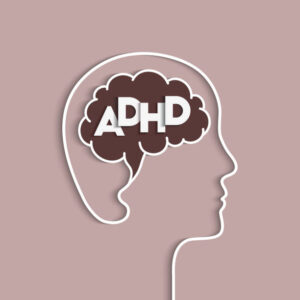
Attention Deficit Hyperactivity Disorder (ADHD) is a neurodevelopmental disorder that affects individuals of all ages and is characterized by symptoms such as impulsivity, hyperactivity, and difficulty sustaining attention. While stimulant medications like methylphenidate and amphetamines are commonly prescribed and well-known for managing ADHD symptoms, non-stimulant medications offer an alternative treatment approach. This article explores the mechanisms and effectiveness of non-stimulant medicines in managing ADHD.
Understanding ADHD Medication
ADHD medications, whether stimulant or non-stimulant, aim to regulate neurotransmitter activity in the brain to improve focus, impulse control, and overall cognitive function. While stimulants primarily increase dopamine and norepinephrine levels, non-stimulant medications target different neurotransmitters or mechanisms to achieve similar therapeutic effects.
Mechanisms of Non-Stimulant Medications
Non-stimulant medications work through various mechanisms to alleviate ADHD symptoms without directly increasing dopamine levels. Here are the primary classes of non-stimulant drugs and how they function:
- Atomoxetine (Strattera)
Atomoxetine is a selective norepinephrine reuptake inhibitor (SNRI) approved for ADHD treatment. Unlike stimulants primarily affecting dopamine, atomoxetine increases norepinephrine levels in the prefrontal cortex. Norepinephrine is crucial in regulating attention, behavior, and impulse control. By inhibiting its reuptake, atomoxetine enhances neurotransmitter availability, improving attention and reducing hyperactivity and impulsivity.
- Guanfacine (Intuniv) and Clonidine (Kapvay)
Both guanfacine and clonidine are alpha-2 adrenergic agonists. They stimulate alpha-2 receptors in the prefrontal cortex, which regulates norepinephrine release. By modulating norepinephrine levels, these medications enhance executive functions such as attention, working memory, and behavioral inhibition. Guanfacine and clonidine are often prescribed as adjuncts to stimulant medications or as standalone treatments for individuals who do not respond well to stimulants.
- Bupropion (Wellbutrin)
Although primarily known as an antidepressant, bupropion also has efficacy in treating ADHD, especially in adults. It works by blocking the reuptake of dopamine and norepinephrine, thereby increasing the availability of these neurotransmitters in the brain’s synapses. This mechanism enhances cognitive functions such as attention and motivation, making it a viable alternative for individuals who cannot tolerate stimulant medications.
Effectiveness and Considerations
Non-stimulant medications offer several advantages over stimulants for managing ADHD. They do not carry the risk of abuse or dependence, making them suitable for individuals with substance use disorders or those at risk of developing them. Additionally, non-stimulants may have a different side effect profile than stimulants, potentially offering better tolerability in some cases.
However, non-stimulant medications generally take longer to reach therapeutic effect compared to stimulants, which often show rapid improvement in ADHD symptoms. Patients may need to wait several weeks before experiencing the full benefits of non-stimulant treatment. Dosage adjustments and monitoring are crucial to achieve optimal therapeutic outcomes.
Clinical Considerations and Usage
Non-stimulant medications are particularly beneficial for individuals who:
- Have experienced intolerable side effects with stimulant medicines.
- Have a history of substance use disorder or other conditions where stimulants are contraindicated.
- Require a longer-acting treatment option.
- Seek an alternative due to personal or medical reasons.
These medications are prescribed based on individual patient profiles. They may be used alone or with stimulant medications for enhanced efficacy.
Conclusion
In conclusion, non-stimulant medications are valuable alternatives in the treatment of ADHD, offering effective symptom management through diverse neurochemical mechanisms. From selective norepinephrine reuptake inhibitors to alpha-2 adrenergic agonists and dopamine/norepinephrine reuptake inhibitors, each medication class addresses ADHD symptoms without the direct stimulation of dopamine pathways. While they may take longer to achieve therapeutic effects compared to stimulants, their unique benefits make them essential components of ADHD treatment regimens. Understanding the mechanisms and effectiveness of non-stimulant medications empowers clinicians and patients alike to make informed decisions regarding ADHD management strategies, ensuring comprehensive and personalized care.
